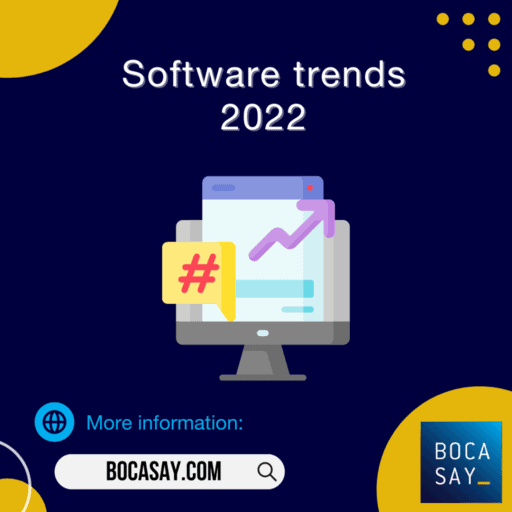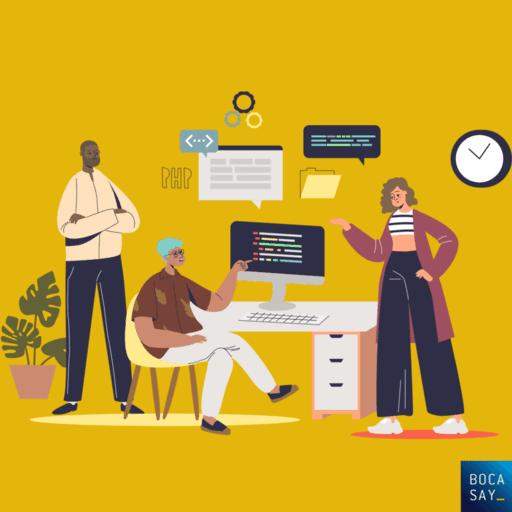The Latest Software Development Trends for 2022
The software development industry has an essential role to play for the wider adoption of new technologies across all market sectors, as well as for the ongoing digitization of business practices and government services. As companies around the world continue to face the business challenges of the global pandemic, rapid advancements in software development have provided IT solutions that help maintain market positions and revenues.
In 2022, key trends that are shaping the future of software development include IT outsourcing, increased automation of repetitive processes, low-code development, as well as cloud computing and AI-approaches.
For companies looking for the most appropriate digital solutions to their business problems, staying informed on the latest software development trends, and strategizing accordingly, is absolutely essential for success.
Without further delay, let’s check out the top software development trends for 2022.

IT Outsourcing
Keeping up with the changing demands of software development is a difficult challenge for companies of all sizes. IT outsourcing enables businesses to access key knowledge and services.
In need of coding, testing, product management or access to talented developers proficient in many programming languages? The business benefits of IT outsourcing should not be forgotten.
Whether it’s nearshore or offshore, a lot of digital businesses are turning to custom software development companies for cost-effective developers based outside their geographic location.
Cloud Computing
Switching to cloud computing isn’t a new software development trend but it is here to stay. Do you make key decisions in a digital company? Then it’s time to take cloud computing seriously.
Easier data maintenance and storage is why more and more businesses are choosing to migrate their applications to a cloud-based environment that facilitates secure remote work practices.
By becoming the go-to infrastructure for enterprises, governments and startups, public cloud databases are fostering digital innovation and providing businesses with flexibility and security.
Blockchain Security
Smart digital solutions require effective methods of digital security. Undoubtedly, our increasing reliance on digital technologies has also drastically increased the risks for data vulnerability.
Enhancing security and providing transparency through smart contracts, blockchain technology is widely used to develop reliable and secure software solutions for banking and healthcare.
With a wide adoption for software development across a wide range of market sectors, it is safe to say that blockchain is easily one of the most disruptive technologies of the 21st century.
🌍 Do you have a digital product in need of development? At Bocasay, our dedicated teams of developers provide software solutions for leading companies around the world. Get in touch to find out how we can help with your next project 🌍
Artificial Intelligence (AI)
The rapid growth of AI practices and tools within software development, offers exciting business potential and will likely continue to see wider adoption, funding and innovation beyond 2022.
It’s all about designing software that is able to independently comprehend key data and act upon it. AI software can empower accurate market forecasts as well as crucial decision-making.
For businesses, anything from user behaviors, customer satisfaction, market projections and overall human psychology, can be strategically analyzed by using AI-powered software solutions.
Low-Code Development
The demand for rapid application development means that low-code or no-code software development practices will continue to flourish by providing cost-effective and fast IT solutions.
Designing software applications with only a basic knowledge of computer programming, can enable companies to design their own IT tools at a fraction of the cost of hiring a pro developer.
A low-code or no-code approach to software development significantly speeds-up the design process of web and mobile apps, workflow management, e-commerce and AI chatbots.
Increased Automation
Software is made up of thousands of lines of computer code. Traditionally, software developers also had to spend time reviewing their code in order to identify and eliminate program errors.
Another game-changing trend is the use of automated code reviewing tools. While they are not perfect, they tend to be more precise and cheaper than performing manual software reviews.
By automating the often tedious process of reviewing software code, companies can easily maintain coding standards across an entire organization, and ultimately deliver a better product.
Predictive Analytics
Predictive analytics are widely used by marketers and digital agencies as a reliable method to predict unknown future events. They combine AI, machine learning, data mining and statistics.
Companies can deploy predictive analytics to develop and deliver more efficient software products, as well as to perform better decision-making during the key process of development.
A few of the tasks these tools can help with include identifying possible buyers, predicting a product’s market performance and determining what new features to add to a digital product.
Python Language
Python is a popular, general-purpose and versatile programming language. It can be used for designing software and websites, as well as for prototyping, task automation and data analysis.
Widely used by software developers, its popularity rests on the fact that it is a relatively easy language to learn, and one that has also gathered a large user base with support and resources.
Addressing contemporary software development needs for businesses, software programmers can use Python to perform complex mathematics and data analysis for large enterprise projects.

Internet of Things (IoT)
Smart digital and interconnected devices are increasingly almost everywhere. From hospitals to supply chain and logistics, the Internet of Things is a popular trend that will shape our future.
Revolutionizing healthcare, logistics, hospitality and manufacturing, software developers will likely continue to design digital products that facilitate communication between smart devices.
The numerous business benefits of IoT include predictive equipment, facility maintenance, real-time cargo and vehicle tracking, as well as remote patient monitoring and many others.
Progressive Web Applications (PWAs)
PWAs are data-light applications that can be accessed from any internet browser and run on any digital device. They essentially provide simple functionality and easy access to websites.
Organizations can use PWAs as a cost-effective method to create cross-platform mobile applications, without having to hire dedicated developers for native app development.
Apart from being a perfect option for apps with simple functionality, more importantly, PWAs can also be used for testing more complex app ideas as an MVP (Minimum Viable Product).